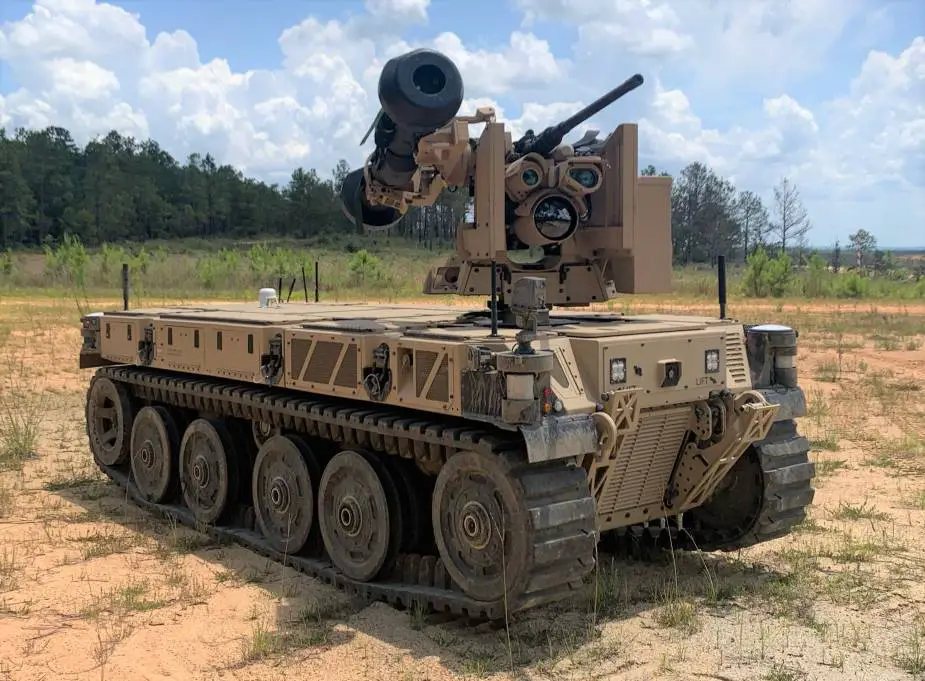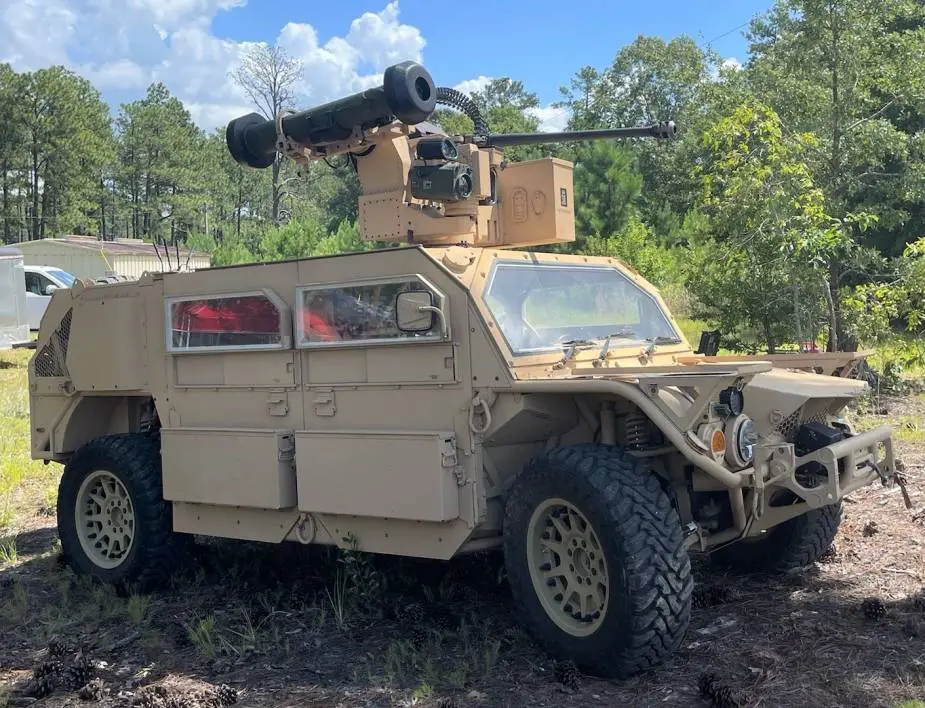During a multi-day demonstration at Fort Benning, Georgia, Kongsberg Defence and Aerospace used four different remote weapon systems to demonstrate future lethality and cutting-edge capabilities which can be leveraged by the more than 17,000 systems already fielded in the U.S. military’s current inventory. This also was the first-ever demonstration where multiple targets were engaged using multiple unmanned platforms simultaneously.
Follow Army Recognition on Google News at this link

QinetiQ North America’s Robotic Combat Vehicle-Light (RCV-L) unmanned vehicle with Kongsberg CROWS-J (Picture source: Kongsberg)
The ground-breaking demonstration was held at the U.S. Army Maneuver Center for Excellence and spanned on July 14-15, 2021. Two light combat vehicles and two unmanned ground vehicles were each equipped with different configurations of the Kongsberg CROWS-Javelin (CROWS-J) and Protector RS6 Remote Weapon Station (RWS), all while networked to one another through the Common Protector Interface (CPI), the standard in remote lethality architecture for U.S. Army and U.S. Marine Corps remote weapon systems.
“Kongsberg remote weapon systems are powerful force multipliers, especially with the addition of Multi-User, Multi-Station (MUMS) capabilities and network advancements that bring incredible value to the U.S. military and allied forces as we continue to earn and prove our position as the remote weapon system of choice for deployment across a broad range of platforms,” said Scott Burk, vice president of Business Development at Kongsberg Defence and Aerospace. “Our continued investments in the architecture and platforms overall maximize the U.S. military’s current inventory, training and provisioning while providing groundbreaking advancements in capability. We wanted to demonstrate new capabilities – rather than competencies we’ve long ago qualified for the Department of Defense – and we are pleased the engagements were flawless.”
QinetiQ North America’s Robotic Combat Vehicle-Light (RCV-L) unmanned vehicle was among the platforms used, demonstrating advanced network lethality capabilities and innovations that meet the needs of the Army and other customers well beyond the next decade. The CROWS systems also simultaneously demonstrated Tech Refresh’s backward compatibility with legacy CROWS systems.
Further, Kongsberg continued to showcase its Protector RS6 platform by successfully firing XM914 (30x113mm) from a lightweight, Flyer Defense Ground Mobility Vehicle (GMV). The RS6 RWS is the system selected by the U.S. Marine Corps for the Marine Air Defense Integrated System (MADIS) program. This firing followed immediately after the successful firing of Javelin anti-tank missiles from the same systems for the US Army at Redstone Arsenal in Alabama in May. This further validates the inherent flexibility of the RS6 design, which allows users to address a broad range of threats and operational needs – C-UAS, SHORAD, ATGM, Maneuver Support, Manned/Unmanned Teaming (MUM-T) – from a single system.

Flyer Defense Ground Mobility Vehicle (GMV) with Kongsberg Protector RS6, the system selected by the U.S. Marine Corps for the Marine Air Defense Integrated System (MADIS) program (Picture source: Kongsberg)














